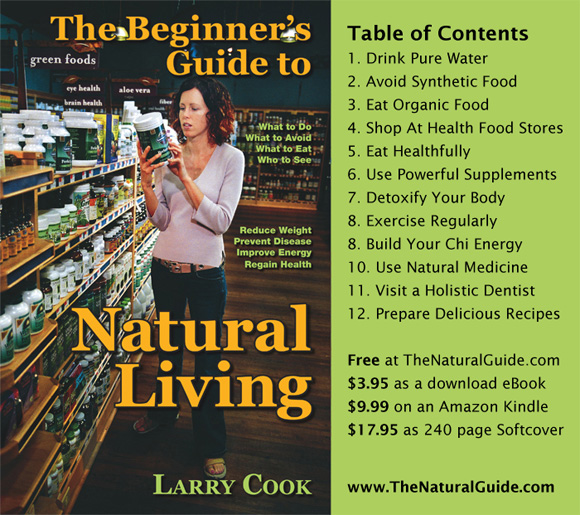|
|
Avoid Synthetic Food
Part 5: Food Additives
As if it weren’t enough that toxic pesticides, herbicides and fungicides are sprayed onto food crops, most manufacturers then lace what we eat with a cornucopia of harmful synthetic chemicals during processing, even though the Delaney Clause specifically forbids it.[i] Since 1959, more than 25 chemical food additives have been banned because they cause cancer or other serious diseases in laboratory animals. Dozens of other additives are currently under review by the U.S. Food and Drug Administration.[ii]
|
|
|
You might be familiar with some of these substances: food dyes, preservatives, flavorings, stabilizers, anti-mold agents, and so on. Unfortunately, our bodies can’t use these chemicals; physiologically, we react to them as we would to a poison. Research has linked some synthetic additives with hyperactivity and behavioral changes—as well as with asthma (which frequently afflicts those with ADHD), cancer and other serious ailments.
Manufacturers use these chemicals because after food is harvested, it can spoil quickly.[iii] So large multinational corporations, seeking to maximize profits and minimize losses during shipping and storage, alter fresh foods using a process that makes them last longer, but strips them of life force[iv] and nutrition. Foods are suffused with synthetic flavorings (because the natural flavor was removed), preservatives (to keep what’s left of the natural food from spoiling), synthetic food dyes (to ensure a uniform appearance at all times—while making food resemble what shoppers think the real thing would look like) and sometimes synthetic vitamins (to create the illusion of nutrition).
This is not what nature intended for us to eat! We become ill from all these chemicals — these toxins — circulating through and ultimately being stored in our bodies. Yet, despite the dangers that food additives pose to our health, their use is widespread. The average additive consumption per person, including pesticides, is about nine to ten pounds a year.[v] By the time an American child is five years old, he will have consumed more than 7.5 pounds of food additives through preservatives, emulsifiers, lubricants, bleaching agents, synthetic sweeteners, flavor enhancers and artificial colors and flavors.[vi] In 1995, the worldwide flavors-and-fragrance market was worth $12 billion. Food flavorings account for 40 percent of this market ($5 billion) and represent approximately 14 percent of the total food-additive market.[vii]
Live Naturally: Improve Your Health Today

Eliminate Food Additives; Improve Behavior
The late Ben F. Feingold, M.D., author of Why Your Child Is Hyperactive, was among the first medical professionals to maintain that synthetic food dyes, preservatives and flavorings can cause severe behavioral changes in both children and adults. Feingold’s research helped get some toxic synthetics banned in the United States. His pioneering work also led to the Feingold Diet for ADHD, which eliminates all foods containing synthetic dyes and food flavorings. Also eliminated are the synthetic antioxidant preservative chemicals butylated hydroxyanisole (BHA), butylated hydroxytoluene (BHT) and tertiary butylhydroquinone (TBHQ), as well as aspirin and other salicylates (naturally occurring compounds found in some fruits, vegetables and toiletries). Thousands of children who have followed this diet showed marked improvement in behavior—and often recovered from ADHD.[viii]
Dropping Synthetics, Raising Test Scores
Children with Attention Deficit Disorder aren’t the only ones affected by food additives; I think the following experiment speaks volumes. In the fall of 1979, New York City schools made an innovative change in the district’s lunch program: they excluded foods with high sugar content, as well as those containing two particular synthetic coloring agents. Within one year, the district’s scores on standardized achievement tests showed an 8 percent increase in “mean academic percentile ranking.” The school system then banned all synthetic food colorings and flavorings. The district’s percentile ranking rose another 4 percent. In 1983, all foods containing the preservatives BHA and BHT were removed from school lunches. The school’s rank increased an additional 4 percent.[ix] Pretty impressive statistics if you ask me!
Eat Organic
Eating organic foods is the best way to ensure you avoid synthetic chemicals. Contrary to what some people believe, preservatives don’t keep you “well-preserved.” You may get away with eating the “Standard American Diet” (how S.A.D. it is!) while you’re young, but check out older people; the majority have lost their zest along with their skin tone. Compare them to seniors who’ve been eating “health food” for decades and you’ll really see the difference. Eating real, old-fashioned organic food is an investment that pays some serious dividends.
>>> Go To Part 5: Aspartame
Notes
[i] The food-additive industry has been trying to get this law repealed for quite some time now.
[iii] The natural foods industry, which typically uses no synthetic chemicals, can often find ways of increasing shelf life through natural means. Nevertheless, shelf life among natural foods is usually less than for mainstream foods. This is one reason why the food costs more. However, paying more for food is better than paying to find a cure for a disease that could have been prevented.
[iv] The life force, in the simplest terms, makes a plant grow. Even after a plant has been harvested, its life force will remain—for awhile. This is why it’s always a good idea to eat food that’s as fresh as possible. It’s also why you might have heard about people eating sprouted foods—they’re seeking out the energy that the food contains.
[vi] The Bread & Circus Whole Food Bible, Christopher S. Kilham, p. 4.
[vii] UBIC: Consultants In Industrial Strategy & Marketing For The Food & Chemical Industries.
[viii] Why Your Child Is Hyperactive, Ben F. Feingold, (New York: Random House, 1996).
[ix] S.J. Schoenthaler, W.E. Doraz, J.A. Wakefield, “The Impact of a Low Food Additive and Sucrose Diet on Academic Performance in 803 New York City Public Schools,” Int J Biosocial Res., 1986, 8(2); pp. 185–195. Quoted by the Feingold Association of the United States.
|
|